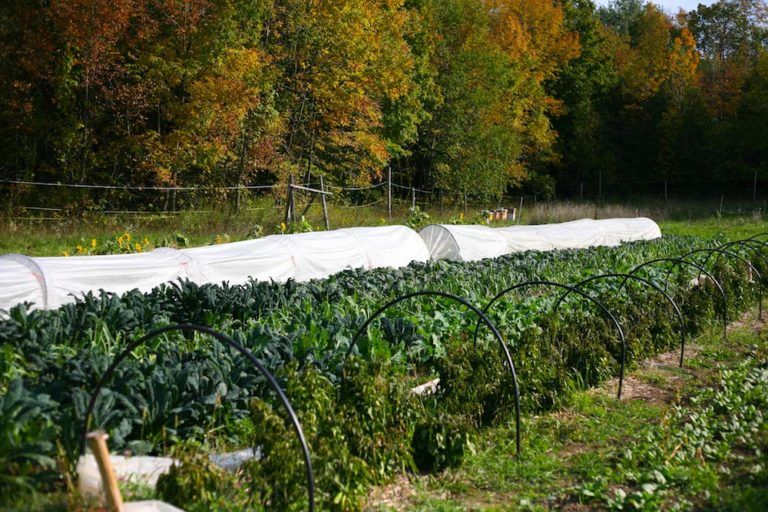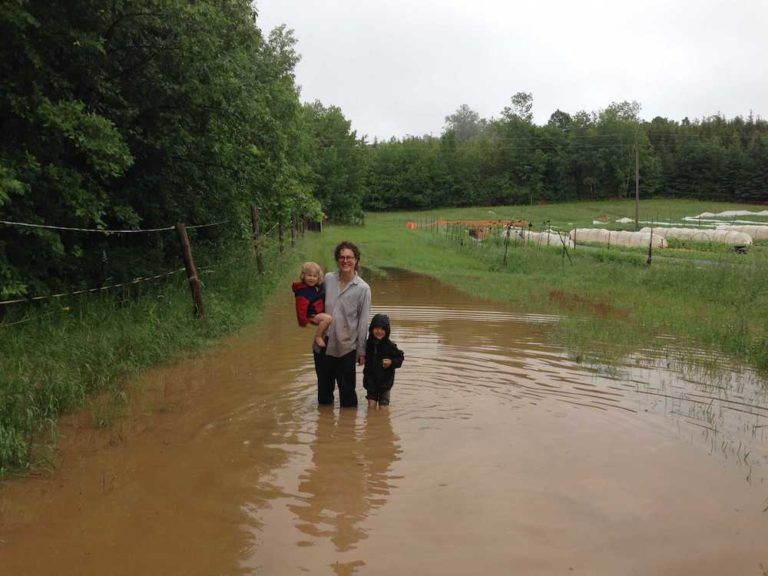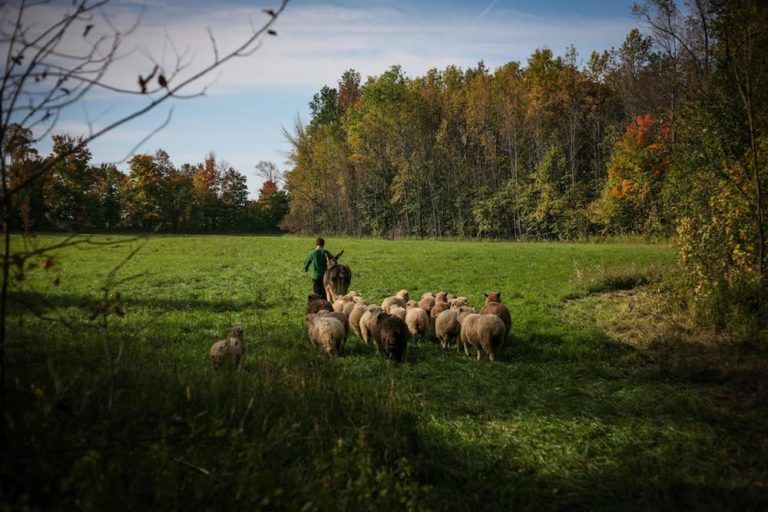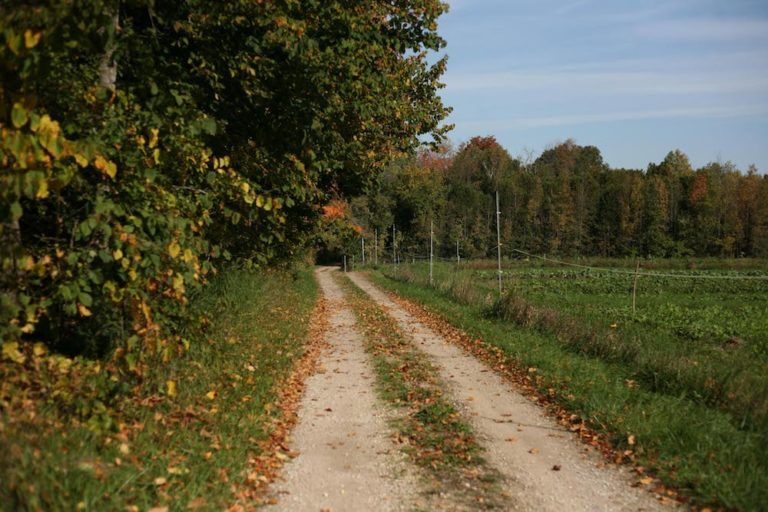Written by Victoria Lesy, Matt Orton, Abdul-Rahim Abdulai, Nicole Unterlander, Abigail Van Reisen from the Arrell Food Institute, University of Guelph; in collaboration with Thorsten Arnold, Ecological Farmers Association of Ontario.
This story is part of a series of case studies documenting the experience of 6 EFAO member farmers as they adapt to climate change on their farms.
Kristine Hammel and her husband know from first-hand experience the strain that climate change puts on farmers. Kristine runs a small-scale diversified farm with her husband, Thorsten Arnold, in Grey County, Ontario. Their operation is made up of 1.5 acres of market garden and 20 acres of hay fields. Since 2010 when they started their operation, they have employed diverse marketing models including direct marketing to consumers through a Community Supported Agriculture (CSA), selling through a local online-farmers market co-operative (Eat Local Grey Bruce), and at farmers markets. They also sell to restaurants and sell sheep meat directly to consumers.

Manifestations of climate change and variability is something Kristine lives with every year as they prepare to kickstart the farm season.
“The last three years have been completely out of whack,” says Kristine. “2016 was extremely dry, [and] 2017 was extremely wet. 2018 started dry for about two months, May to July two and a half months, and then turned into continuous wet from August to now – from desert to rice paddy! So there does not seem to be a sort of moderate or average anymore. Fluctuations probably balance out over the whole year, in terms of the same amount of precipitation that we are getting, but we just happen to have now two or three months where we are not getting anything or where we are getting it every day.”
She added that changes go beyond rainfall as temperatures have also been unpredictable. “It tends to be very hot for very long or then quite cool for very long. This year [2018], we had a lot of snow in late April and a cold and late cool start to the season. Then June and July were very hot and totally dry. Weather doesn’t seem to swing quickly from one to the other; we seem to get stuck in extended weather patterns where we get one thing and then we get it for a long time and quite severely.”

What struck Kristine goes beyond the variability and unpredictable weather conditions they face each season. Climate change impacts have become very much localized so that it becomes difficult to rely on information from weather stations that are far apart from each other.
“Yes, that also seems to be part of it: once I got soaked 2 km from home during the dry spell, but had no rain at home. Then, I got rain much earlier than people six kilometres to the east of me. It seems to be quite patchy.”
The localized nature of climate makes planning difficult for most farmers, and for many, this means a growing threat to their operations with declining yields. For Kristine, they have lost yields in the last couple of years because things have either been too dry or too wet.
The impact of climate variability for farmers goes beyond the farm and their pockets as Kristine recounts how the changes are having a toll on their physical and mental health: “If it’s 35 degrees and humid, it is very different working conditions than 25 degrees, so its physically exhausting and it’s very stressful.”

To most farmers, giving up is not an option on the table: they love their jobs and have so much emotional and physical connection with their land. For Kristine, it is all about being innovative and devising new practices to better cope with the situation, while ensuring their operations have minimal environmental impacts. Such efforts include her investments in new infrastructure including greenhouses to reduce dependence on weather conditions, creating drainage facilities, and more localized approaches like digging a pond in the future to store water and attenuate the microclimate. However, Kristine thinks being resilient in the age of climate change means farmers must also look beyond the farm, a situation she describes as diversifying their operations. She resorts to making use of her skills beyond the farm by organizing workshops and training for home gardeners, as well as growing transplants for sale. Kristine’s efforts to diversify her revenue streams demonstrate a proactive approach to mitigating the effects of climate change.
Despite going the extra mile to become more resilient to climate change, Kristine fears for the future as she thinks conditions will only become worse. She highlights the need for external supports in order for individual farmers to be able to thrive, including a role for government and research institutions. Kristine sees education through experiential and demonstration models led by farmers as a way to help farms become resilient to climate change, and this cannot be achieved without financial support. She explains that it is only through directed farmer-led research that we can produce impactful knowledge responsive to the farm community.





